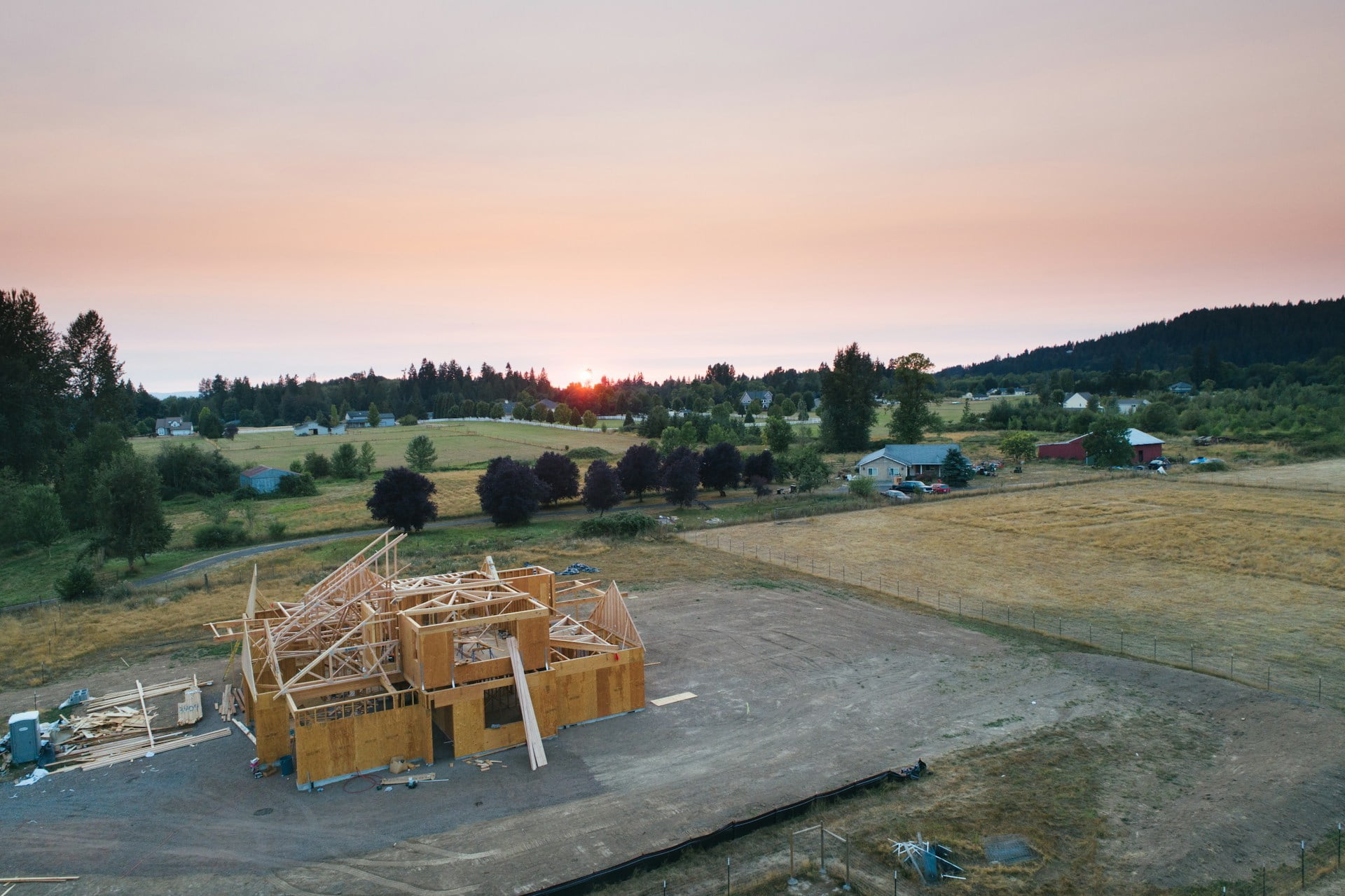Building a new home is a perfect opportunity to customize your space according to your own needs and wants — and it can also feel completely overwhelming. Many homes built from the ground up will require the new owner to make more than one thousand decisions about everything from paint color to what fixtures you want in your kitchens and bathrooms.
If you’ve always dreamed of having complete control over what goes into your home, then don’t despair. There are lots of ways you can make your new-construction experience smoother and even take some decisions off the table until further on down the road when you’ve lived in the house for a few months. Before you dive into a new construction deal, make sure you’ve got these basic tips in mind, and your experience with the builder will be both fun and rewarding.
Set a budget
Unless you’re independently wealthy or have won the lottery recently, you’ll be working within the constraints of a budget. This needs to encompass both the building itself and all the fixtures and features you can add. If you haven’t talked to a financial advisor about what you can afford on your current household income, that would be a good first step.
Once you have a budget range in mind, think about how much you really feel comfortable spending. It’s tempting to push to the very limit of your potential budget but think about the monthly payments (don’t forget taxes and homeowners’ insurance!) before you commit.
Some of the upgrades that you’ll be offered will also be a lot cheaper and offer a lot more options if you wait until after you’re living in the home to take advantage of them. Remember that if you spend at the upper end of your budget, you won’t be able to make those changes as quickly as you might want.
When you’ve figured out what your budget is, make sure you stick to it. A little bit of wiggle room is fine, but if you find yourself constantly exceeding what you planned on spending, you might regret it later.
Create a vision board
Just like your clothing or your car, your home reflects your personality. It’s a place where people allow themselves to be vulnerable and spend their most intimate moments of every day, so spending some time to decide what feels right is going to help you make tough decisions and eliminate options as the build progresses.
One excellent way to pin down your sense of what you want in a home is to use a vision board to collect your ideas. A vision board for a house can include colors, textures, fabrics, pieces of furniture, windows and doors, flowers and plants, anything that you feel captures the essence of what you want to achieve. You can build your vision board using an actual piece of posterboard (an old-school but effective method), use vision board software on your computer, or just create a Pinterest category especially for your house and collect your ideas there.
Know why you want what you want
This shouldn’t be a newsflash to anybody, but different people need different things from their living environments. For example, a homeowner with arthritis or another condition that affects fine motor skills might prefer a faucet that’s easy to turn on and off to the low-flow model that proclaims itself to be the most environmentally friendly. If you don’t have any issues with fine motor skills, then maybe the low-flow faucet is the best choice.
Before you’re tempted to dig into fixtures and make decisions about them that could be hard to change, sit down with the other people in your household (if there are any), and have a conversation about what they like and don’t like about how your current home is configured. You might be surprised by what you learn, and it’ll give you an opportunity to structure your new home for maximum convenience for everybody.
Tour homes to collect examples
Builders will usually have at least one model home that you can peruse, if not several. If you can, spend some time looking at the different homes available to you — even if you’re not interested in using the builder or moving into the development that you’re touring. You’ll get a better sense of what different fixtures and finishes look like in a completed house, so these tours will help you when it comes to your own decision-making.
Bring your household with you on these tours, and take notes on what you like and don’t like about different homes and their features, from appearance to functionality. Then when your spouse is urging you to pick a fixture that you both thoughts looked terrible in the model home, you can remind them that you saw it and hated it.
Coordinate finishes
You don’t need to use exactly the same faucet in every bathroom in the home, or even the same finishes throughout the house. But thinking about how your finishes coordinate together within each room will save you from mistakes like inadvertently ordering a towel rack that’s a completely different color than your faucet.
For a good rule of thumb, keep finishes standardized within each room. Then consider how each room-wide finish coordinates with all the others. It’s not always a good idea to go matchy-matchy with everything, but a modern brushed-chrome kitchen might feel jarring in a house where the bathroom fixtures are modeled after antiques. Consult your vision board while you’re making decisions to see whether your decisions match up to your overall vision or are way off the mark.
Match the look and feel of your house
A Victorian-inspired bathroom is probably going to look pretty out of place in a mid-century modern house. Not everybody wants a house that’s perfectly coordinated, of course — and most builders don’t offer a huge variety of home styles; many people who buy new-construction homes like them because they are, well, new. Modern!
So this isn’t a hard-and-fast rule as much as a guideline, but it’s still worth remembering: Do your best to match the look and feel of each room in your home with your home’s overall look and feel. This is how professional stagers work to make homes enticing to buyers, and if you follow their example, you can feel like you’re living in an interior design magazine every day that you’re in your new abode.
Remember the floors and walls
The floors and walls in your house are going to have a big influence on how space feels when all is said and done. Your builder should have several options for you, and it’s a really good idea to ask a lot of questions about all of them.
For flooring, ask about cleaning and upkeep, durability, and which options are popular choices in the development. This can help guide your own decision-making; even if you really like the laminate flooring that most people on the block are choosing, if you’ve got kids or pets, upgrading to real wood might keep your floors nicer for longer than the laminate.
And think about your own lifestyle choices, too. If you’ve got a young cat that likes to claw up the carpet, it probably makes sense to forego carpet for a different flooring type (or ban the cat from your beautifully carpeted bedroom). If you have several young kids, the carpet might be a bad move for another reason. But if you live in a cold climate and remove your shoes at the door, the carpet may be just the thing to make your house feel cozier. Revisit your considerations of why you want what you want and use them to tackle questions about the walls and the floors as they emerge during construction.
Know what to skip now and tackle later
Although it feels more efficient to buy everything upfront while your house is being constructed, there are several upgrades that you might want to hold off on making until after you’re occupying the house. And in some circumstances, it might make sense to opt for a lower-quality choice to pass the inspection, then upgrade at your leisure later one.
For example, if you want a range hood in your kitchen, consider installing the cheapest one that the builder has available and then upgrading it later. You’ll have a wider selection of options and will probably be able to get a better deal on a high-end range hood after you’re in the house, but a range hood is an addition that needs to be inspected and approved, so you might as well include it in the initial build and clear the inspection hurdle upfront.
Other upgrades will be cheaper and provide a lot more selection if you can bring yourself to wait. Some of those upgrades include countertops, light fixtures, cabinet hardware (door and drawer handle), paint on your walls, backsplashes in the kitchens and bathrooms, and kitchen appliances. Even if you’re head-over-heels for one of the options that the builder is offering, you can still save a lot of money by waiting until after closing to add it.
Try not to fall in love
New construction can be just as heartbreaking as it is exciting — usually when you discover a fixture or an upgrade that’s absolutely perfect, then realize it’s way beyond your budget. When you find yourself starting to have feelings for something specific, recognize it as a warning sign to back up, take a deep breath, and remind yourself that you’re going to be living in this home for (most likely) a long time, and you’ll have more opportunities to make it perfect.
If you bring some structure and strategy to your new-construction project, it’ll feel more like an opportunity than an overwhelming mess. Do your best to plan ahead and manage your own expectations, and you’ll discover that moving into a new-construction home that you helped design gives you a giddy feeling nothing else can match.
Need more help? We have amazing designers we work with to help our clients make the myriad selections for their brand new home. We can help you too! Call or text us at 703-980-0243, email: Juli.Clifford@Compass.com



